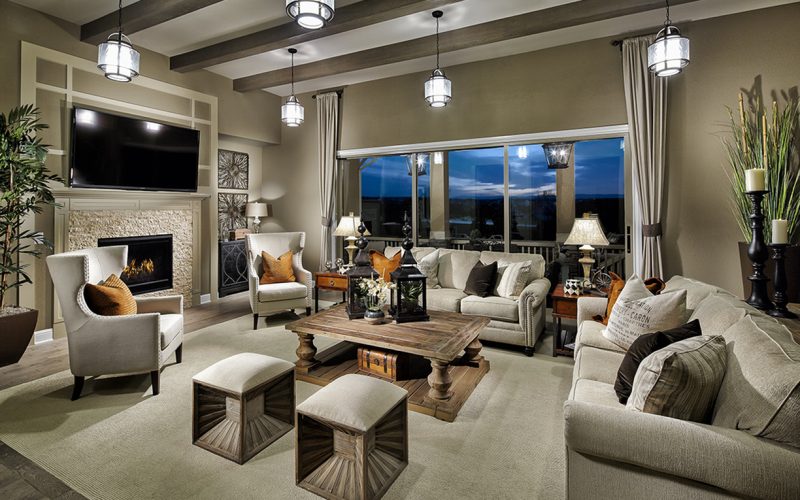The Best Way to Use Lighting In Interior Design
Lighting design is an integral part of interior design. It affects the ambiance, aesthetics, and functionality of a space. The right lighting can make a room look spacious and open, while the wrong choice can make it feel cramped and dark.
With the right lighting, you can create the right mood for a space. For example, using light in a small living room to make it appear bigger can be ideal. In addition to that, light has a huge impact on daily activities like reading or working. With that in mind, we’re here to tell you everything you need to know about interior design with light.
How lighting affects interior design
– In interior design, the effect of lighting on the final product is a vital consideration. Most people understand that light has a powerful effect on mood, but it’s not as simple as that. The type of light, its direction, and the time of day all impact the emotional response a room will elicit.
– Proper use of lighting can add elegance and sophistication to an interior design project. When selecting lighting for an interior design project, it’s important to consider budget and space availability. This will help ensure the lighting properly complements the overall design goals.
– Overall, lighting can play a vital role in interior design projects. It can help create a positive or negative emotional response in people and can help create a specific atmosphere for interior design projects such as modern or traditional. Visit this website to get more insight, https://www.infinite-exchange.com
Types of lighting used in interior design
The lighting used in interior design can be of two types – general lighting and task lighting. General lighting is used to illuminate an entire room and is usually used in combination with task lighting. General lighting consists of lamps, accent lights, or open spaces filled with light. Task lighting refers to the use of lights to highlight specific features of a room, such as a table lamp used on a nightstand or a floor lamp used near a bed.
Different types of general lighting include tungsten lamps, halogen lamps, fluorescent lights, LED lights, and more. Each has its own benefits and drawbacks. When choosing interior lighting fixtures, seek out the type that provides the illumination you desire without compromising your budget or environment.
Depending on the use and application of the lights, different factors like lumens rating, color temperature, light output, brightness, and style come into play.
Apart from interior lights, there are also task lights such as desk lamps and reading lights for different uses. Also consider using dimmers to control the light output and brightness levels of interior lights.
How to use lighting in interior design?
Lighting can add a touch of sophistication and luxury to a room. When used correctly, it can create a relaxing atmosphere in the bedroom and highlight the details of objects or scenes. You can use light to set the mood for different activities or occasions by lighting up specific features of an object or scene. A good way to start using lighting is by experimenting with different types of lights. This will help you find out which type of light best suits your needs and preferences. You can also look into different types of lighting, such as natural light, artificial light, and studio lighting. Each type has its own unique characteristics that you should consider before making a purchase. By using lighting creatively, you can create a stunning interior design statement without spending too much money.
Tips for using lighting in interior design
When it comes to interior design, lighting is one of the most important elements. It can help create a relaxing and comfortable atmosphere, or a warmer and inviting atmosphere. This is because light can enhance the mood of a room and draw attention to specific elements.
You can use natural light to create a calm and soothing ambience, or use ambient light to create a more welcoming and warm atmosphere. You can use task lighting to improve work efficiency or highlight specific elements in a room. If you’re looking for a dramatic effect, consider using accent lights. They can add extra brightness to a room without overpowering it. Finally, you can use light fixtures to create a particular mood or style. They provide an easy way to incorporate lighting into your interior design ideas.
Which light should be used in interior design?
The most common light source used in interior design is natural light. This can be obtained from windows or door openings to brighten a room naturally. Another option is incandescent lights. These warm lights provide a natural look and are easy to use. Incandescted lights also come in several varieties, including warm-white and eco-option, which provide different looks and energy efficiency levels. Another option is fluorescent lights. These provide a cool, sterile look and are easy to use. Finally, chandeliers can be used for both dramatic effect and for lighting up a large area.
Another type of lighting used in interior design is track lighting. These fixtures can be used to highlight specific areas of the room and provide uniform lighting across the entire space. The right lighting choice for interior design depends on the desired look and features of the room.
How important is lighting in interior design?
Lighting is essential to interior design, and can have a significant impact on the mood and feel of a space. It can be used to create different effects in a room, depending on the type of light used. Natural light is the most popular type of lighting because it is versatile and easy to work with. But lighting can be used in various ways, from accenting specific features of a room to filling the entire space with light. LEDs are the latest type of lighting technology and offer a variety of benefits, such as low energy consumption and longer lifespan. Whether using natural or artificial light, interior designers strive to create spaces that are both functional and inspiring.
What impact does daylight have in interior design?
Light plays a significant role in interior design, as it can help create a balance between the indoors and outdoors. Daylight is the best type of light for interior design because it is neutral and provides a sense of peace and tranquility. Natural light is typically the best option for interior design, due to its natural qualities and ability to create a balance between the indoors and outdoors. However, fluorescent light can be used in certain cases, such as in small spaces or specific areas of the room. LED lights are currently the best option for interior design, as they provide a wide range of colors and are energy-efficient. Besides, artificial lighting can negatively impact natural light and must be used carefully to avoid creating areas of darkness in interior spaces.
What impact does artificial light have in interior design?
Lighting has a significant impact on interior design, both in terms of mood and function. Whether natural or artificial, different types of light can create different effects in a room. For example, ambient lighting can help create an intimate atmosphere. But it can also be used to create a more open and spacious feel.
The type of light fixture that is chosen will affect the cost, style, and functionality of the light. If you are planning to design an interior space, it is essential to consider the various options available and their lighting functions.
What is decorative lighting in interior design?
Decorative lighting is the use of artificial light to create an ambience, atmosphere, or visual effect in interior design. It can be used to create a variety of effects, such as adding drama and intensity to a room, enhancing natural light, and providing a focal point. Different types of decorative lighting can be used in different ways to achieve the desired effect. For instance, spot lighting can be used to accentuate a piece of artwork or to spotlight a feature of a room. Decorative lighting is often used in high-end interior design projects, where it can help enhance the look and feel of the space. In some cases, it can even be the focal point of a room.
Lighting is a vital part of interior design. It can enhance the aesthetics of a space, help people navigate it more easily, and support functionality. However, lighting design is an art that requires expertise and understanding of human behavior as well as practical design skills. While every designer has their own individual approach to interior lighting design, here are a few commonly used lighting designs and the impact they have on human behavior for you to use for your next interior design project.

